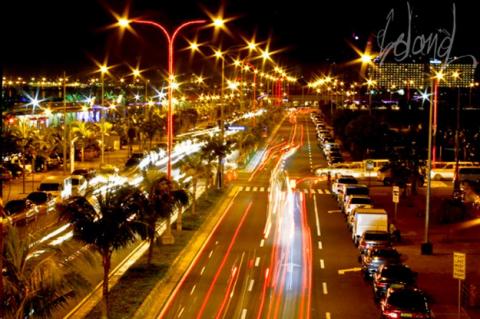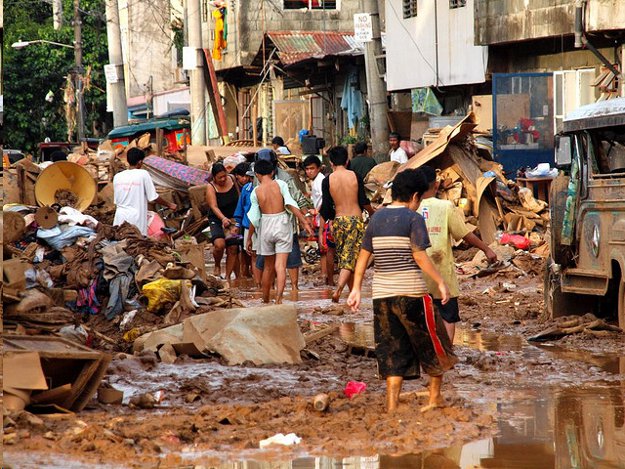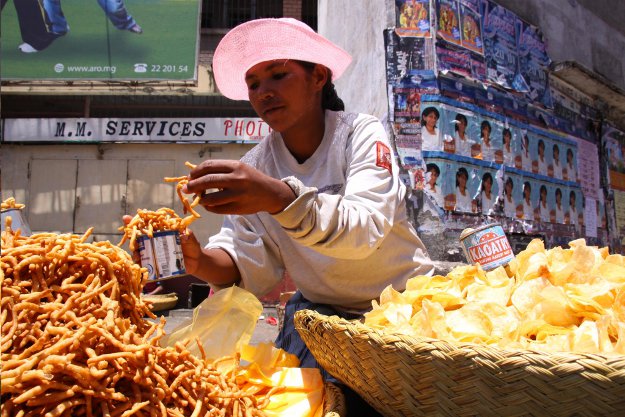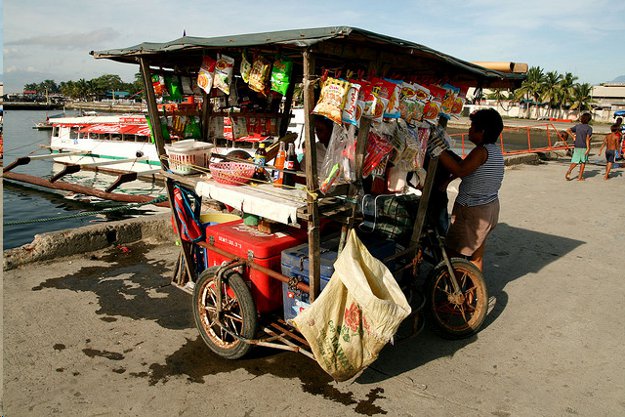The Philippines: Islands In Search Of Identity

In the heart of downtown Manila, the Intramuros neighborhood attracts locals and tourists alike, with preserved history and architecture that is representative of the Spanish colonial occupation of the archipelago—a time when the country did not belong to the people that lived there. Visitors can tour a variety of structures, such as Fort Santiago, as well as San Agustin Church, all the while passing by barefoot residents sitting outside shops selling international phone cards and soft drinks.
On three sides of the perimeter of Intramuros—the one not bordered by the Pusig river—sits the Intramuros Golf club, a short but challenging golf course catering to the wealthy citizens of Manila in addition to the many businesspeople that arrive there daily to attend meetings, or maybe to find a wife. Just beyond the border of the golf course, on the other side of the wrought-iron fence designed to keep people both in and out, is a tree-lined sidewalk that is home to many of Manila’s enormous homeless population, evidenced by the people sleeping under trees in makeshift shelters and preparing food over small fires.
An unwitting pedestrian attempting to make his way into Intramuros on foot may find himself a witness to one of these homeless relieving themselves in the bushes, a fairly common occurrence on the streets of Manila. This dichotomy of poverty bordering wealth that is surrounding more poverty is emblematic of many stark contrasts that exist not just in Manila, but in the entire country.
Another contrast a visitor encounters almost immediately is one of identity, and this forms the foundation by which all of the other contrasts emerge. This identity crisis, if one is so inclined to call it that, stems from the country’s history as a colonial territory, beginning with Spanish rule that lasted until the late 1800s, at which time Filipinos were able to achieve their freedom only to then turn around and be colonized by the United States. This occupation lasted until after World War II, when the Philippines was granted its independence and the freedom to exist as an autonomous country, which it still enjoys today.
Nowhere is this issue of identity more evident than in language, with the official languages of the Philippines being English and Tagalog, both spoken by the majority of the Filipino people, and used not only interchangeably but also concurrently. To the untrained ear, the Spanish origins of Tagalog can be easily distinguished, with many words and phrases sharing the exact same meaning in both languages. Where it gets tricky for foreigners is when locals combine both English and Tagalog into a hybrid they refer to as “Taglish,” where it is not uncommon for a speaker to begin a sentence in one language, continue it in another, and conclude it in the original. While the usage of both languages appears to be rather arbitrary to Filipinos due to the fact that they can speak both fluently, what this indicates to outsiders is an indecisiveness of identity, choosing to co-opt the most useful parts of both cultures rather than forming a culture that would be entirely and uniquely their own.
In addition to—or perhaps resulting from—the identity conflict that is occurring from the Philippines history as a colony, there is also the ongoing battle between religion, government, and the increasingly progressive attitudes of Filipinos. A holdover from its time as both a Spanish and American colony, the Philippines is widely known as the only predominantly Catholic nation in an overwhelmingly Islamic region of the world. Catholic prayers are routinely said before government meetings as well as public gatherings, a practice not largely found in other countries where the majority of the population is Catholic. Separation of church and state is not an important concept in the Philippines, a situation responsible for the conflict that currently exists in the Southern part of the island chain in places like Mindanao, where the Islamic population has grown resentful of the Catholic government—as well as the far-reaching influence of the Vatican—making the region increasingly dangerous not only for tourists but for non-Islamic Filipinos as well.
All of this would seem to indicate that a religious government may not be the best option for the country, if having one means alienating some of its citizens and inciting rebellions that render some of its parts practically lawless. Ironically, the Philippines is also becoming increasingly known as a country of freedom and tolerance for its citizens, with very liberal approaches towards issues like homosexuality and the discreet practice of prostitution.

The reality of these contrasts—as well as many others—is laid bare when an event of such incredible magnitude occurs that it acts as an equalizer, forcing all citizens, both rich and poor, to face the same disastrous circumstances head on. For the Philippines, this event was Typhoon Haiyan—known locally as Typhoon Yolanda—which made landfall on November 8, 2013. Not only was it arguably the strongest typhoon ever to make landfall, it was also the deadliest in Philippines history, killing more than 6,300 people. The memory of this devastating storm is still fresh in the mind of Filipinos, a moment in time many still have great difficulty talking about, but at the same time are determined to move forward from. There was not a single human being in the entire chain of islands not affected by Haiyan, and many communities have only just started the process of rebuilding nearly a year later.
One of the areas hardest hit by Haiyan was the city of Tacloban, in the Visayas region of the Philippines. According to one resident of the nearby island of Boracay, Tacloban is “basically no longer there,” with many of the area’s residents still homeless after the storm. The death toll in this region is still heavily disputed with as many as ten thousand people feared dead. The problem facing those seeking to reach an accurate count is the extremely rural nature of some of the parts of these islands—with no running water or electricity, and farms and villages practically cut off from the urban areas of the Philippines, getting an exact count of the population proves to be extremely difficult, which makes assessing an exact number of dead and missing as a result of Haiyan virtually impossible.
However, the Philippines is a country that is familiar with the process of rebuilding. On billboards located throughout Manila’s Ninoy Aquino International Airport, Philippine Airlines touts the increase of the frequency of their flights between Manila and Tacloban “due to popular demand.” Additionally, it is hard to travel anywhere in Manila without encountering a construction zone—the worldwide chain Resorts World Casino has opened up a sprawling facility adjacent to the runway at the airport (the very first thing a visitor sees from the airplane window upon landing) with construction already well underway to expand the location into a mega-complex featuring hotels, restaurants, shopping, and other entertainment venues. As far as typhoons, Filipinos have come to accept them as a common occurrence: only last month the Philippines saw two typhoons make landfall in less than two weeks, which, while causing some destructive flooding on the northern part of the island of Luzon, still saw many people braving the wind and rain to go shopping at the Mall of Asia in Manila, one of the largest shopping malls in the world.

Almost immediately after the typhoons have passed, things in Intramuros are back to business as usual. Pedicab drivers circle, offering discounted tours that cannot be accomplished by tourists alone on foot, as they are quick to point out that the land area that encompasses Intramuros is greater than 64 hectares. Vendors try to sell hats and other assorted items, or offer to take pictures of tourists in front of sites, either with their own cameras or camera phones, for a reasonable price. Unfortunately, this also means that the Filipino homeless population, who have somehow managed to find shelter during the storms, will be back on the streets relighting their cookfires and discreetly relieving themselves behind trees and bushes.
Ending the juxtaposition of poverty and commercial development that is so very evident to anyone visiting the Philippines will come when Filipinos finally find their own identity, one that is not a holdover from a colonial past that is long over. Whether or not that will actually happen is something Filipinos—and people in love with this fascinating country—are eager to witness.

Author Bio:
Michael Verdirame is a contributing writer at Highbrow Magazine.
For Highbrow Magazine
Photo credits: Susana Secretariat (Wikipedia, Creative Commons); Salym Fayad (Wikimedia, Creative Commons); Keith Bacango (Flickr, Creative Commons).































































































































































































































































































































